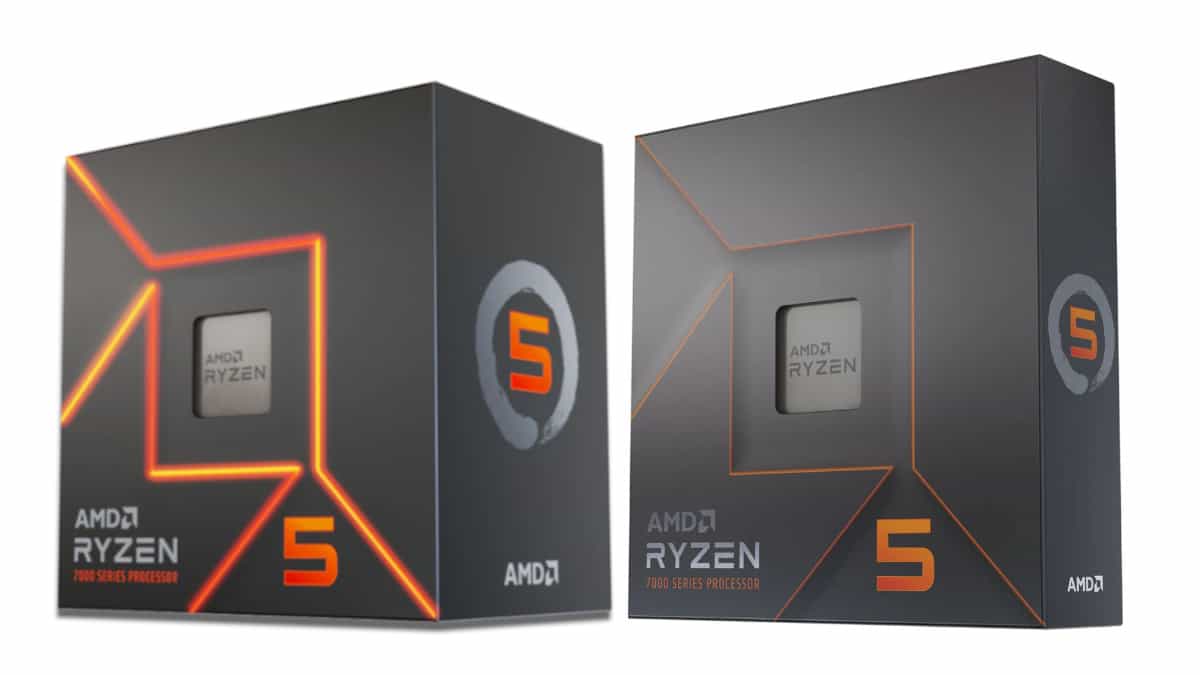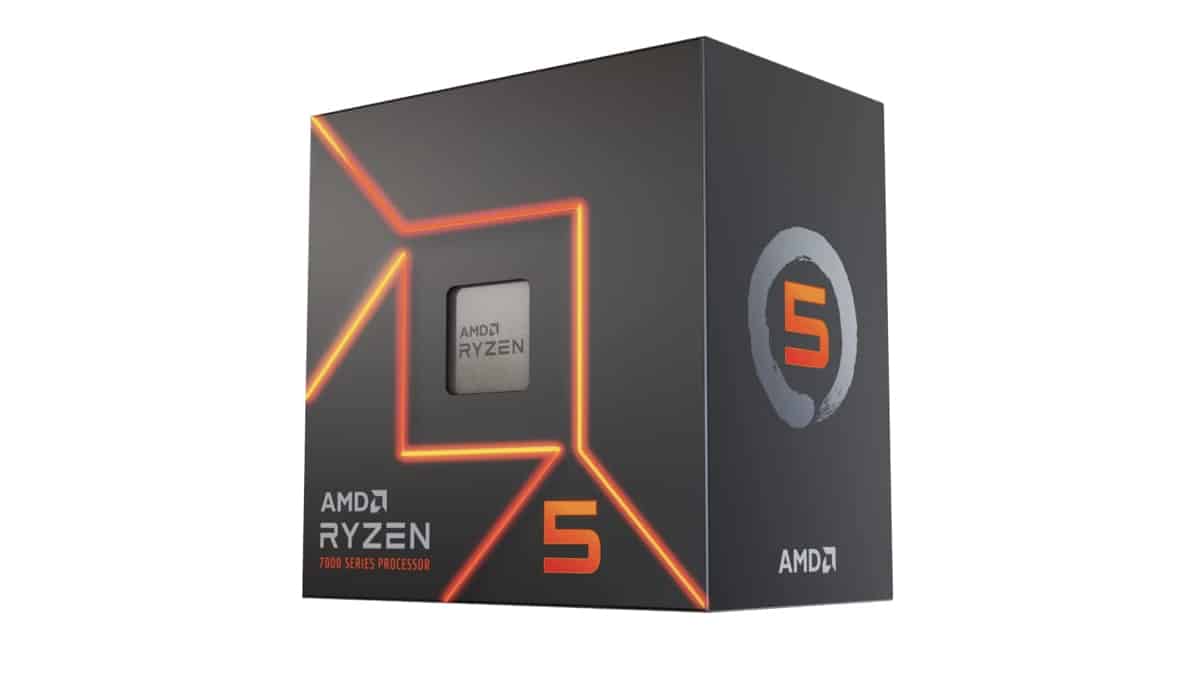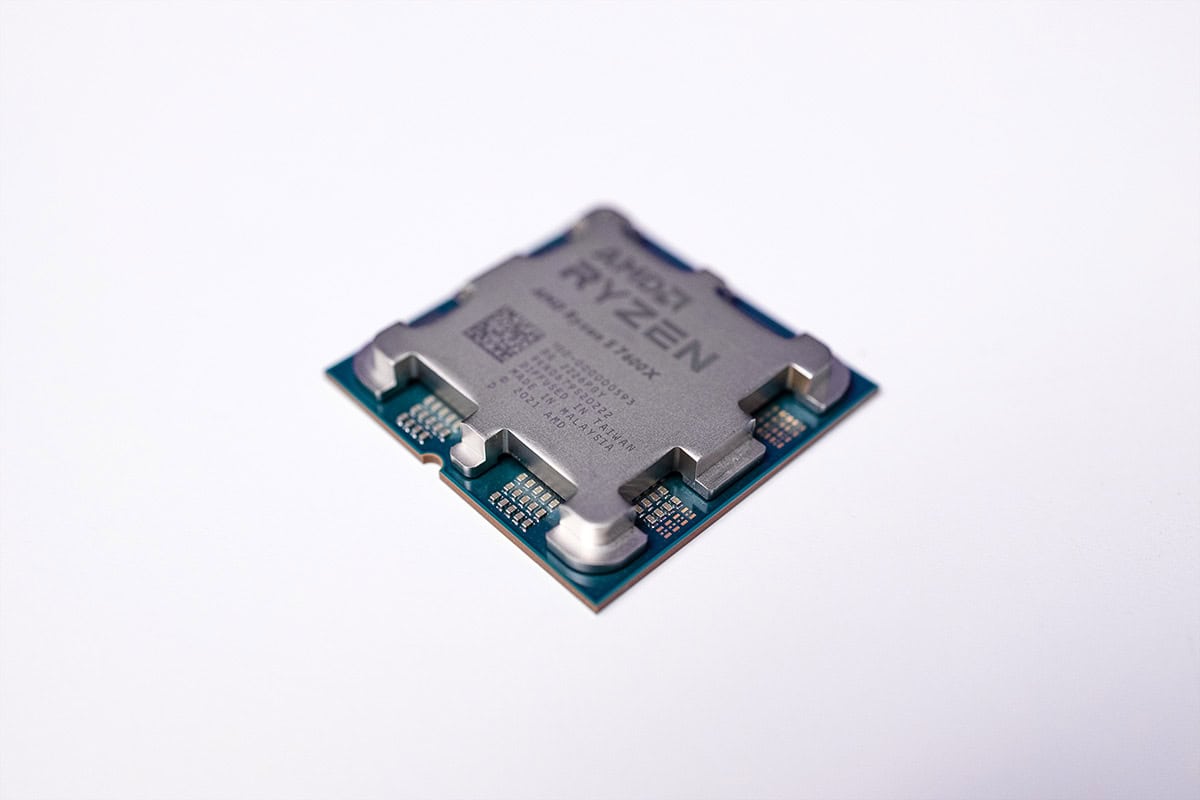Ryzen 5 7600 vs Ryzen 5 7600X – which is right for you?

Table of Contents
AMD is all about performance-per-watt limits. Last year, when it was about to release the Ryzen 7000-series processors, it wrote a press release about the importance of this metric; and as it turns out, this is a vital aspect to look at when purchasing any PC component, especially GPUs and CPUs. In this article that’s important, as we will compare the Ryzen 5 7600 vs the Ryzen 5 7600X.
We'll see how Team Red managed to lower the power consumption in the newer SKUs to deliver a more affordable and efficient piece. We will also compare the specs, price, and performance with verified benchmarks.
Prime Day is finally here! Find all the biggest tech and PC deals below.
- Sapphire 11348-03-20G Pulse AMD Radeon™ RX 9070 XT Was $779 Now $739
- AMD Ryzen 7 7800X3D 8-Core, 16-Thread Desktop Processor Was $449 Now $341
- ASUS RTX™ 5060 OC Edition Graphics Card Was $379 Now $339
- LG 77-Inch Class OLED evo AI 4K C5 Series Smart TV Was $3,696 Now $2,796
- Intel® Core™ i7-14700K New Gaming Desktop Was $320.99 Now $274
- Lexar 2TB NM1090 w/HeatSink SSD PCIe Gen5x4 NVMe M.2 Was $281.97 Now $214.98
- Apple Watch Series 10 GPS + Cellular 42mm case Smartwatch Was $499.99 Now $379.99
- ASUS ROG Strix G16 (2025) 16" FHD, RTX 5060 gaming laptop Was $1,499.99 Now $1,274.99
- Apple iPad mini (A17 Pro): Apple Intelligence Was $499.99 Now $379.99
*Prices and savings subject to change. Click through to get the current prices.
Ryzen 5 7600 vs Ryzen 5 7600X: Specs
The Ryzen 5 has always been the sweet spot for gaming. It has the pricing and the specs to back up the fame and recognition it receives. In the 7000-series, AMD opted for a powerful Ryzen 5 7600X processor. It packed this CPU with 6 cores and 12 threads and the ability to go as high as 5.3 GHz clock speed.
To achieve this the brand had to pump up the TDP to 105 W, something that seems too high for AMD’s philosophy. This is why Team Red decided to announce the non-X SKUs, which are set to be strong processors with lower TDPs.
And during CES 2023, Team Red announced the release of three SKUs of the non-X series set for January 10. While the new CPUs are different, they’re not completely unlike there forebearers. Here's the comparison table of the Ryzen 5 7600 and the Ryzen 5 7600X.
| Ryzen 5 7600 | Ryzen 5 7600X | |
| Architecture | Zen 4 | Zen 4 |
| Core count | 6 | 6 |
| Thread count | 12 | 12 |
| Base clock speed | 3.8 GHz | 4.7 GHz |
| Boost clock speed | 5.1 GHz | 5.3 GHz |
| Memory cache | 32 MB | 32 MB |
| TDP | 65W | 105 W |
The first main difference that stands up in the table is the clock frequencies. The Ryzen 5 7600X has a base clock speed of 4.7 GHz, while the 7600 non-X goes as low as 3.8 GHz. For CPUs, it's vital to keep a lower base clock speed as they help the processor to keep cool and quieter when idle or under light load, which can further improve power efficiency.
But more importantly, this helps the CPU to draw less power and improve efficiency. The 7600 non-x can get as low as 3.8 GHz which translates into a CPU that can work with only 65W. However, a low base clock speed like that one involves a change in the overall performance of the CPU, diminishing its ability to boost the frequencies and lowering the performance when under a heavy workload (like gaming).
For this reason, the Ryzen 5 7600X is capable of going as high as 5.3 GHz when automatically boosted, as opposed to the non-x that can only achieve 5.1 GHz – that might seem like not too much of a difference but it is when they're faced with demanding gaming or content creation.
The other aspect which we've mentioned already is TDP. Thermal Design Power, is a measure of the amount of heat that a CPU is expected to generate under normal operating conditions. A higher TDP rating generally indicates that a CPU will generate more heat and may require a more robust cooling solution, such as a larger heatsink or a more powerful fan.
This can be especially important in devices that are designed to be used for extended periods of time, or that will be subjected to heavy workloads like gaming. On the other hand, a lower TDP rating can allow for a smaller and more power-efficient cooling solution.
In this regard, the 65W of the Ryzen 5 7600 makes the processor more power efficient, cooler, and quieter than the 7600X. However, it also makes it less of a fit for demanding video games or content creation tasks.
Ryzen 5 7600 vs Ryzen 5 7600X: Price
AMD has always been known for giving good price tags to its components. Although this might have seemed a difficult case, Team Red did a good job pricing the new CPUs.
The Ryzen 5 7600X comes with a total MSRP of $499, while the non-x version will be sold at $429. The $70 price difference will mean a lot for people looking to cut costs everywhere to get a better GPU, or for people who want to have the Zen 4 architecture but are on a tight budget.
Ryzen 5 7600 vs Ryzen 5 7600X: Synthetic Performance
Based on Synthetic Benchmarks provided by our sister site WePC, the Ryzen 5 7600X appears to be faster than the Ryzen 5 7600 in most tests. In the CPU Z Single and Multi benchmarks, the 7600X scored 766.4 and 6075.6, respectively, while the 7600 scored 723.9 and 5801.5.
In the Cinebench R23 Single and Multi tests, the 7600X scored 1954 and 15000, respectively, while the 7600 scored 1847 and 14130. Finally, in the Geekbench Single and Multi tests, the 7600X scored 2183 and 11120, while the 7600 scored 2050 and 11099.
Overall, and unsurprisingly, the 7600X appears to offer slightly better performance than the 7600 in these benchmarks, with an average increase of around 3-4%. It is worth noting, however, that these results are based on synthetic benchmarks and may not necessarily reflect the performance differences that you would see in real-world usage. It is always a good idea to consider multiple sources of performance data when comparing CPUs.
Ryzen 5 7600 vs Ryzen 5 7600X: Gaming Performance
| Game (1080p LOW) | Ryzen 5 7600 | Ryzen 5 7600X |
| CP 2077 (FPS) | 165 | 170 |
| Elden Ring (FPS) | 154 | 157 |
| CS: GO (FPS) | 371 | 378 |
| GTA V (FPS) | 187 | 187 |
According to these results, the Ryzen 5 7600X is not notably better than the non-X. In fact, in the 1080p resolution tests the 7600X is only 2-3% better that the non-X.
Based on this, if the price difference were wider, we might advise the 7600 non-x over the X-series in any case. However, keeping in mind that there's only a $70 price difference, it might be worth it to purchase the X version if you can spend the extra.
Final thoughts
What is certain is that the Ryzen 5 7600 is much more efficient than the 7600X. And it performs pretty admirably, considering it’s a cheaper and less power-hungry CPU.
Additionally, a 40W gap goes a long way when it comes to CPU thermal draw. And if we take into account the results from the synthetic benchmark for 2-3% less performance, any builder may be better off saving 70 bucks purchasing the non-X processor, unless you really only want the very best performance in this bracket.



